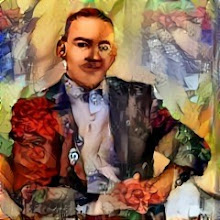Evolution is a a blind unsupervised mechanism based on replication, mutations and selection. It produces Nature events and self-organization that are not really random but unexpected forms and levels of order emerging from apparently disordered and chaotic kinds of conditions.
Evolution is known as a biological idea. However, long before Darwin wrote his Origin of Species had Adam Smith introduced the idea of self-organizing spontaneous order emerging by the pursuit of self-interest of the individuals in the free market. Thoese unexpected forms and levels of order, created by the invisible hand, are cultural artefacts, not biological origin. Today we know that that what Adam Smith only could refer to as an mysterious process and a result of forces difficult to recognize may be analyzable with similar approach as biologists are using in DNA analysis.
During the past 5-10 years significant steps have been taken which will soon help us to understand the evolution of one very special group of cultural artifacts, namely the evolution of the symbiotic structures of natural and artificial languages.
Symbiogenesis of machine languages and human languages!
Some of us still remember (it was less than 10 years ago!) the early days of XML DTDs and the time when someone invented XML schemas. Today world is filled with XML-schema spaghetti; hundreds of millions XML messages are sent in systems as that picture describes, rerouted and transformed to application level events and finally consumed by humans. I spent many years developing these XML schemas with my customers. Later, in the early years of this millenium, I even had the opportunity to follow and briefly participate the work of an international standards body who was trying to control the evolution of one set of these XML-based machine-consumed languages. I learned a lot, especially the following.
The idea of symbiogenesis in the neo-Darwinist evolution theory refers to the fact that many of these "unexpected forms and levels of order emerging" in fact emerge and enter, enter and emerge in close ecological relationships with other forms and levels of order. A machine language structure - an XML-schema fragment, for instance, in late 90's could only live and flourish in a close relationship with a structure of natural language. Today that has changed.
The intimacy of these symbiotic relationships varies. In 'ectosymbionts'
the associations between organisms are purely external, whereas in 'endosymbionts'
one of the organisms is actually incorporated internally into the other (the 'host').
I will next quote Timothy John Taylor's dissertation From Artificial Evolution to Artificial Life Univ. of Edinbergh 1999)
It is possible that the relationship between host and (endo)symbiont
becomes so strong that the previously independent organisms are totally dependent on
each other for their survival and reproduction, and effectively become a single organism. This process, the evolutionary origin of new morphologies and physiologies by symbiosis is called 'symbiogenesis'. Symbiogenesis is a mechanism for 'horizontal' gene transfer, where the genetic material from essentially unrelated organisms can be brought together in a single descendant. (end quoting)
Using construction based approach for grammar induction some Tel Aviv scholars have recently developed an ADIOS algorithm that can generate new sentences using the grammar and constructions inducted from existing corpus. ( See Shimon Edelman, Zach Solan, et al. "Learning Syntactic Constructions from Raw Corpora" ). The algorithm works with hidden structures in human language and in other raw sequential data such as music, proteins, DNA and more. http://www.tau.ac.il/~zsolan/
There is one more final step to be taken. We need to develop holistic algorithms who not only can learn to read and construct syntactic and semantic patterns for any given language but, furthermore, who can deal with symbiogenetic constructs and offer a better mechanism for horisontal transfer of information from purely syntactical constructs into the semantic- and pragma-normative spheres of language use.
Tuesday, January 17, 2006
Subscribe to:
Post Comments (Atom)

No comments:
Post a Comment